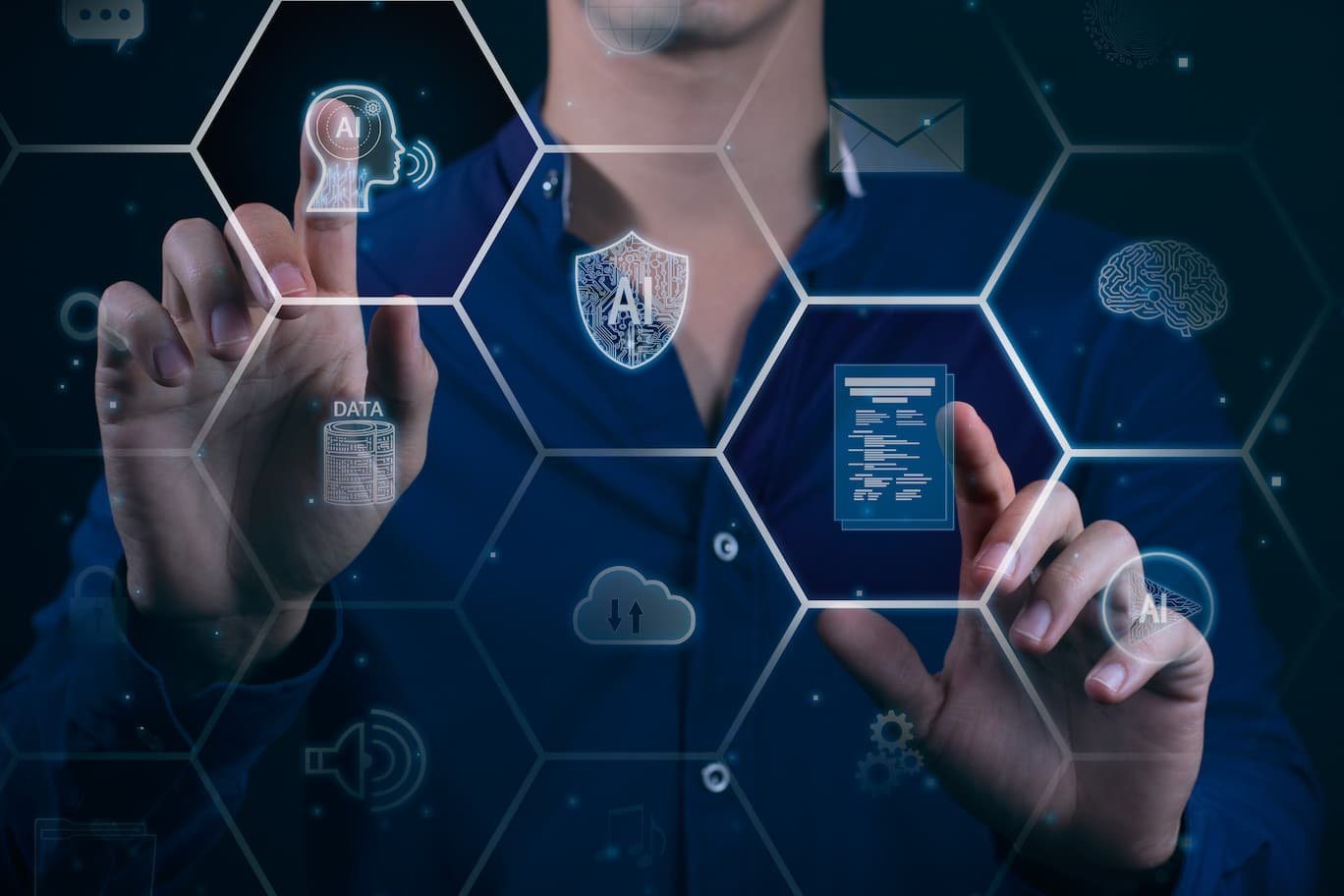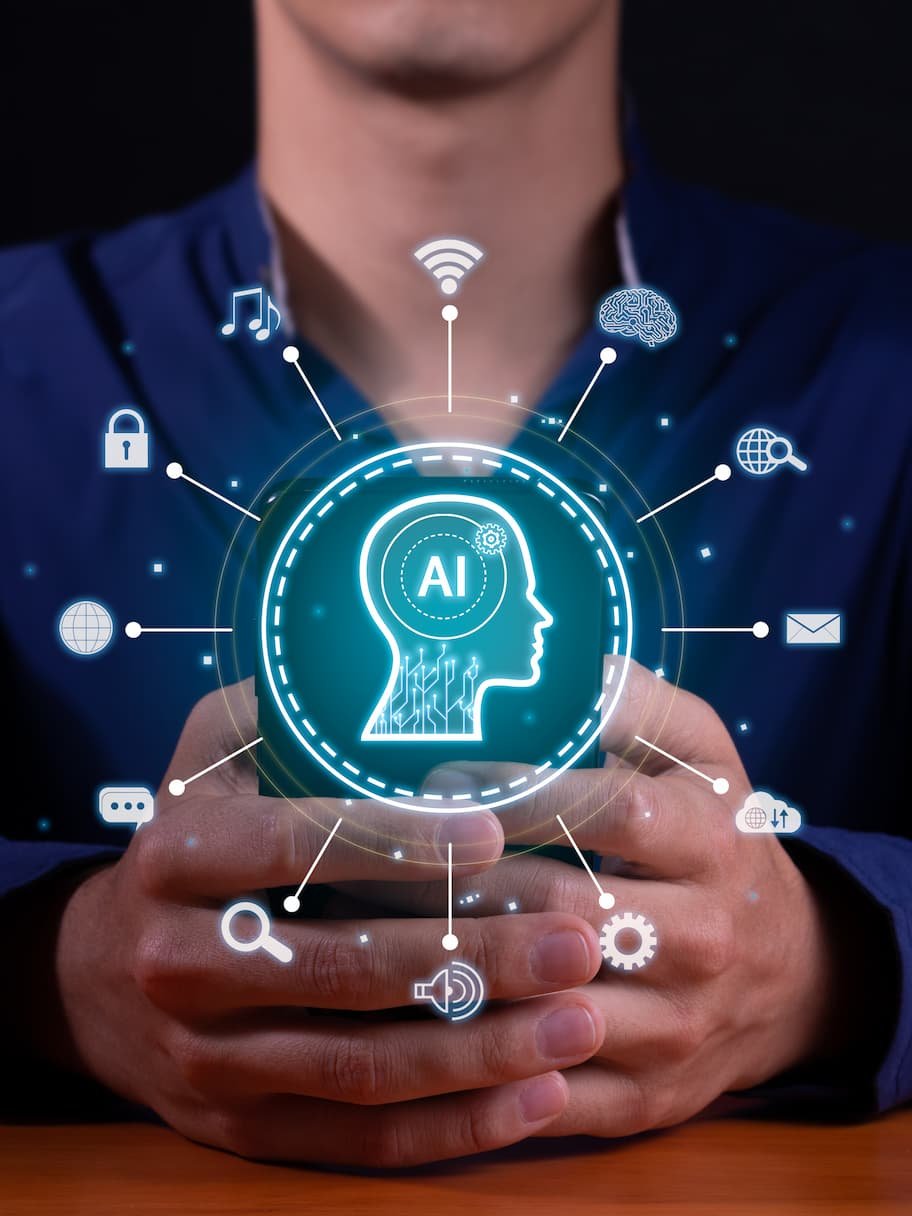
Digitalisation of Energy Infrastructure
How AI, Blockchain, and Peer-to-Peer Trading are Driving Decentralised Green Infrastructure
The global energy market is undergoing a transformative shift driven by the urgent need to decarbonise energy systems to mitigate climate change. The cost of renewable energy technologies like solar and wind, are rapidly declining in cost and being deployed at scale. At the same time, the electrification of transportation and heating, combined with a growing global technology-savvy population, is expected to substantially increase electricity demand in the coming decades.
These trends pose major challenges for ageing electricity grids that were designed for centralised, fossil fuel-based generation. The intermittency of renewable energy requires the grid to become more flexible and responsive to variations in supply and demand. Additionally, the rise of prosumers – households and businesses producing their own renewable energy – necessitates a shift to more decentralised energy systems.
Emerging technologies in the realms of internet of things (IoT), artificial intelligence (AI), and blockchain are converging to enable new solutions, such as: AI enhances grid reliability, efficiency, and renewable energy integration through advanced analytics and forecasting. IoT enables real-time monitoring and management of grid assets, supporting maintenance and stability. Blockchain provides a secure framework for peer-to-peer energy trading and ensures data integrity, streamlining transactions. Examples include AI predicting battery lifetimes, IoT detecting supply and demand changes, and blockchain verifying renewable energy production and consumption in real-time.

Disaggregation – using machine learning algorithms to break down a building’s energy data into appliance-level usage provides granular, real-time visibility into electricity consumption patterns. This data can help predict demand, identify inefficiencies, and empower consumers to change behaviours.
Peer-to-peer (P2P) energy trading platforms – underpinned by blockchain, these are arising to allow prosumers to trade their excess renewable energy directly with consumers in their local area much like the more traditional community energy schemes adopted in the past. With the addition of tier 1 Blockchain networks such as Ethereum, it enables trades that can be recorded in a transparent, tamper-proof and decentralised way, without the need for an intermediary. Tokenisation of energy and carbon credits can turn them into tradable digital assets thus creating an additional revenue stream for asset owners.
How It Works
For example, an intelligent IoT home hub device that samples household electricity data at high frequency, performs edge processing using AI, and connects to a blockchain-based P2P energy trading platform E-Trading Platform (ETP). The ETP can identify individual appliances via load disaggregation to provide real-time usage insights and predictions to consumers via an app.
On the ETP, prosumers and consumers within a local community can trade renewable energy generating an energy trading token – which for the purpose of this article we can refer to as ECO2 – with prices dynamically optimised based on supply and demand forecasts derived from the smart meter data. The blockchain records all transactions transparently, with a percentage of the fees funding community projects or being used to burn ECO2 tokens, reducing supply and in theory increasing the value of the token.
This presents prosumers with an alternative to selling their excess solar energy to the grid at a fixed feed-in tariff, which is often much lower than retail electricity rates. Instead, they can earn more by selling P2P to their neighbours at competitive rates. Consumers benefit by accessing local green energy at affordable prices, with full transparency into its provenance. P2P trading can also enhance grid resilience by reducing reliance on long-distance transmission infrastructure that is vulnerable to outages.

The ETP would be designed to be flexible and scalable. It could onboard other digital assets like carbon credits, enable P2P trading between electric vehicles and charging stations, help balance local microgrids, and provide granular carbon accounting. The underlying architecture would use a hybrid of a public blockchain and private permissioned ledgers to optimise for performance, improve efficiency and ensure regulatory compliance.
UK Regulatory Restrictions
Several European countries have already started adopting AI in their energy sectors, particularly in the context of smart grids and distributed energy resources. However, the level of adoption varies among countries due to different regulatory landscapes, technological readiness, and market conditions.
Countries like Germany, France, and the Netherlands have been at the forefront of AI adoption in the energy sector. For example, Germany has implemented AI-based forecasting and optimization tools in its virtual power plants, while France has utilised AI for predictive maintenance of grid assets.

In the UK, although there are challenges in fully adopting AI and allowing peer-to-peer (P2P) energy trading, the country has made progress in supporting community energy schemes. These schemes enable local communities to collectively own and manage renewable energy projects, promoting distributed generation.

The main barriers to entry for AI in the UK’s energy sector include:
- Regulatory constraints: Current energy market regulations may not fully support the integration of AI and P2P trading. Updating these regulations to accommodate new technologies and business models takes time and requires collaboration between policymakers and industry stakeholders.
- Data privacy and security concerns: AI relies heavily on data, and there are concerns about data privacy, ownership, and security. Establishing clear guidelines and standards for data management is crucial for widespread AI adoption.
- Infrastructure readiness: Implementing AI in the energy sector requires advanced metering infrastructure, communication networks, and data management systems. Upgrading existing infrastructure to support AI can be costly and time-consuming.
- Skill gap: The energy sector needs a workforce with the necessary skills to develop, deploy, and maintain AI systems. Bridging this skill gap through education and training programs is essential for successful AI adoption.
Despite these barriers, the UK is making efforts to support AI in the energy sector. Initiatives like the Energy Data Taskforce and the Modernising Energy Data Access (MEDA) program aim to improve data accessibility and standardization, which are crucial for AI implementation. As the regulatory landscape evolves and infrastructure improves, the UK is likely to see increased adoption of AI in distributed generation and smart grid management.

At NICL, our understanding and experience in cutting-edge solutions leverage blockchain, Web3, and digital assets to drive AI adoption in distributed generation. Our incubation and partnership with Kyoto Protocol gives us a unique advantage in creating a decentralized, transparent, and efficient energy ecosystem.
By combining our expertise with KyotoProtocol.io technology ecosystem and framework for reducing greenhouse gas emissions, we offer innovative solutions that promote sustainability and incentivise renewable energy adoption and carbon credit generation. Our blockchain-based platform ensures secure and transparent transactions, while our Web3 technologies empower consumers and communities to actively participate in the energy market.
Through energy tokenisation, digital assets along with regenerative finance solutions, we create new investment opportunities aligned with KyotoProtocol.io objectives.
Our AI algorithms optimise energy management and identify sustainable investment options, driving the transition to a low-carbon future.
NICL’s experience in this space sets us apart as a leader in the energy sector, enabling us to break down barriers to AI adoption and facilitate community participation in the green energy revolution.

Wider Application of AI
AI will play a key role in optimising the ETP by ingesting diverse data streams such as smart meter data, weather forecasts, and satellite imagery to continuously improve the accuracy of generation and consumption predictions over time. Machine learning can also personalise trading strategies based on each user’s preferences.
Ultimately, the combination of IoT, AI and blockchain can break down data silos and enable a collaborative, decentralised energy system that aligns incentives between prosumers, consumers, utilities and grid operators. Granular asset-level data from IoT devices provides the foundation for AI to derive predictive insights that improve system efficiency. Blockchain enables direct P2P trading of energy and carbon assets in a secure and transparent way.

Adoption through Evolution
As adoption scales, this has the potential to accelerate the transition to cleaner, more resilient, and affordable energy systems. A dynamic market pricing mechanism for distributed energy resources incentivises deployment of renewables, storage, and smart devices. Consumers are empowered to take an active role in the energy market. Utilities can leverage these digital solutions to engage customers, unlock new business models, and become more agile in navigating the energy transition.
However, realising this potential will require addressing key challenges around technology scalability, regulatory frameworks, data privacy and security, and social acceptance. Technical barriers include improving the performance and efficiency of blockchains to support high transaction throughput with low fees and minimal energy consumption. Regulatory sandboxes may be needed to allow experimentation with P2P energy trading within existing legal constraints. A sandbox is a safe, controlled environment where you can play and experiment without affecting the real world. Similarly, a regulatory sandbox is a special legal framework set up by the government that allows companies to test out new ideas and business models that might not fit within the existing regulations.
Clear data governance frameworks are needed to ensure privacy and security. And solutions must be designed from the ground up with a human centric approach to drive mass adoption.
Despite these challenges, the direction of travel is clear. The convergence of clean energy, digital technologies, and decentralisation offers a compelling pathway to developing a more sustainable, equitable, transparent, and resilient energy system. With the right mix of innovation, policy support and collaboration, we can harness bits and electrons to dramatically accelerate the global energy transition in the crucial decades ahead.


